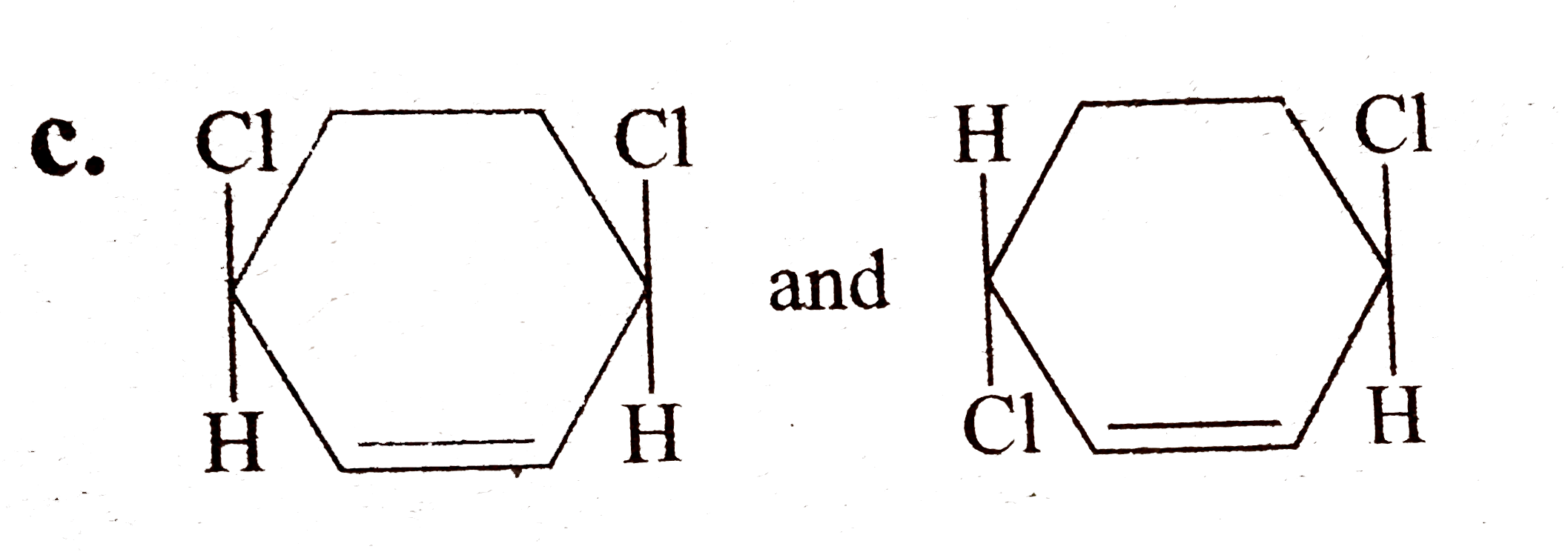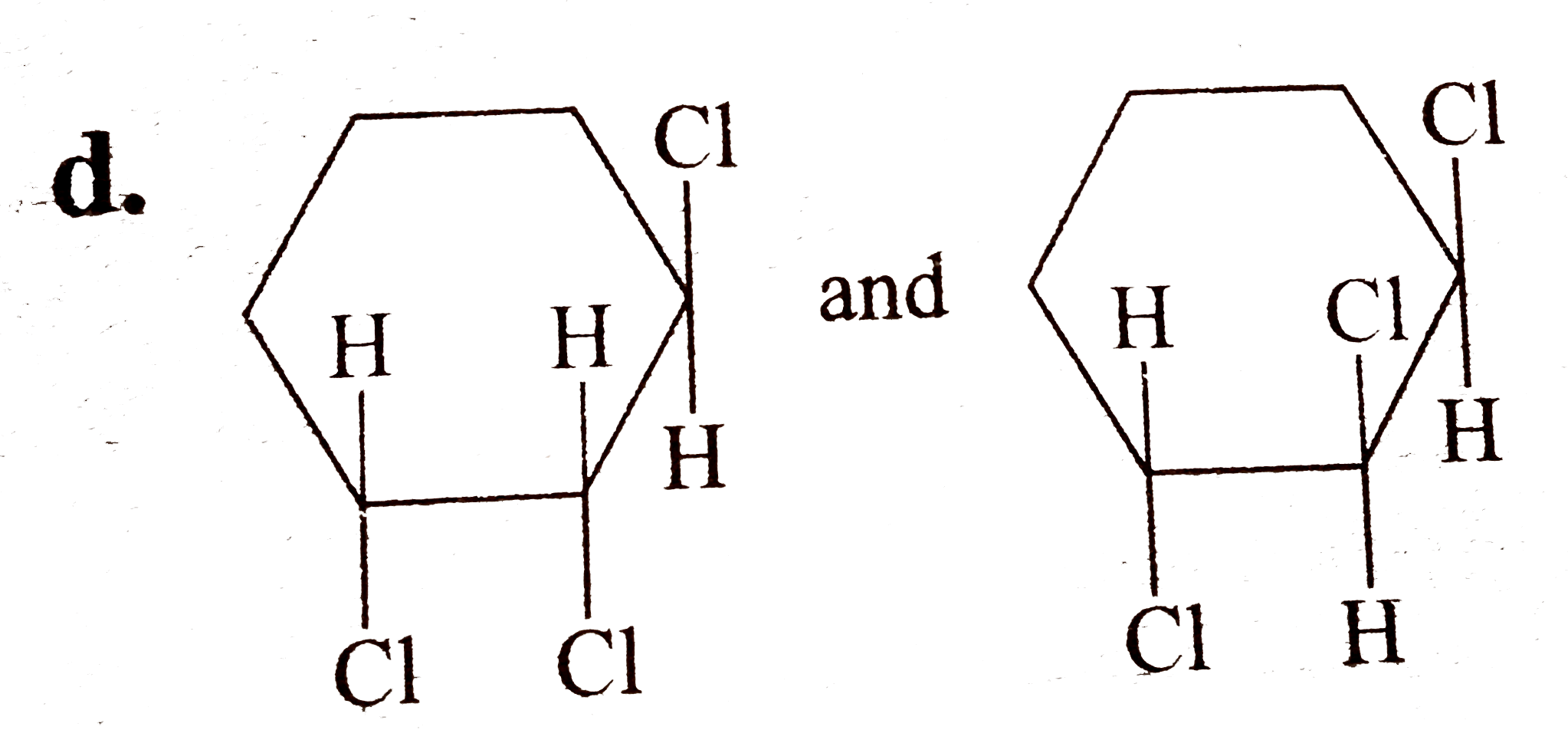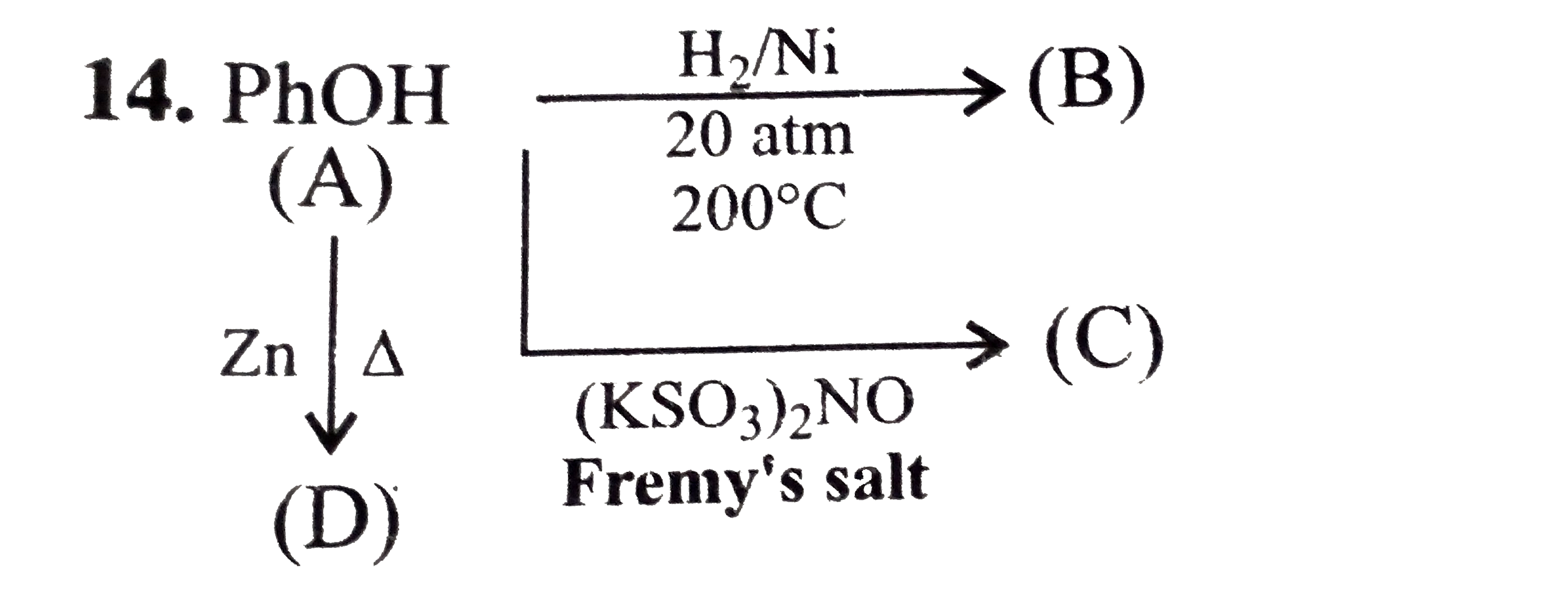
(B) and (C) , respectively, are :
A

B

C

D

Video Solution
Text Solution
The correct Answer is:a
Anti − addtion of Cl2.
|
Topper's Solved these Questions
- ALKENES AND ALKADIENESBook:CENGAGE CHEMISTRYChapter:ALKENES AND ALKADIENESExercise:Multiple Correct Answer Type
Explore 41 Videos
- ALKENES AND ALKADIENESBook:CENGAGE CHEMISTRYChapter:ALKENES AND ALKADIENESExercise:Single Correct Answer Type
Explore 62 Videos
- ALKENES AND ALKADIENESBook:CENGAGE CHEMISTRYChapter:ALKENES AND ALKADIENESExercise:EXERCISES
Explore 29 Videos
- ALKANES AND CYCLOALKANESBook:CENGAGE CHEMISTRYChapter:ALKANES AND CYCLOALKANESExercise:Archives
Explore 13 Videos
- ALKYNESBook:CENGAGE CHEMISTRYChapter:ALKYNESExercise:Exercises (Archives - Analytical and Desriptive Type)
Explore 4 Videos
Similar Questions
Knowledge Check

A, B and C are respectively areA B
B C
C D
D

(B), (C), and (D), respectively, areA B(b) (I), (III), (II)C(c) (III), (II), (I)D(d) (III), (I), (II)
B(b) (I), (III), (II)C(c) (III), (II), (I)D(d) (III), (I), (II)
The compounds (B), (C ), (D), respectively are:ACyclohexanol, benzene, and p-quinoneBBenezene, cyclohexanol, and p-quinopneCp-Quinoue, cyclohexanol, and benezeneDCyclohexanol, p-quinone, and benzene
Wthanol is dehydrated as,

Major products (A),(B) and (C ) are respectively :
View Solution
Identify gametes (A, B and C) respectively -
View SolutionFigures 9.7 (a), (b), and (c) respectively, indicate the point of focus in case of

View SolutionIdentify (B) and (C) (respectively) in following conversion:

View Solution , Product B and C are respectively :
, Product B and C are respectively :
View Solution



